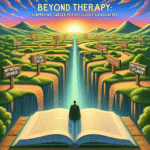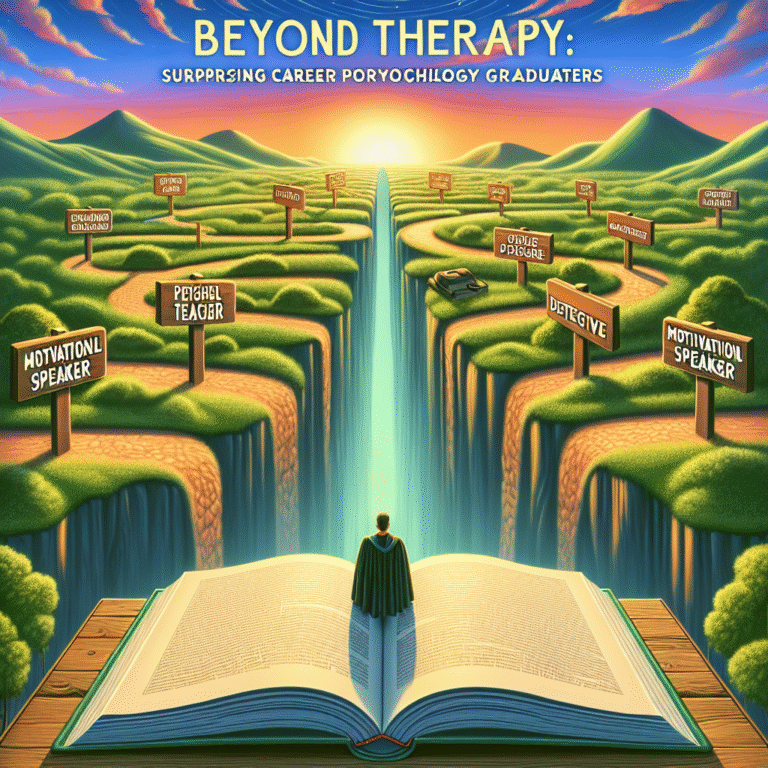Transform Your Life: Essential Therapy Options for Overcoming Phobias
Introduction
Imagine waking up every morning, free from the chains of fear that once dictated your life. Sounds incredible, right? For many, phobias can feel insurmountable, casting shadows on our daily lives and limiting our experiences. But what if you had access to proven therapy options that could help you reclaim your freedom? Understanding the path to transformation is not just about coping; it’s about overcoming. This article will explore essential therapy options designed to help you transform your life and move past phobias.
Understanding Phobias
Phobias are more than just temporary anxiety or fear; they are classified as anxiety disorders characterized by an excessive, irrational fear response to specific objects, situations, or activities. Approximately 10% of people experience a phobia at some point in their lives. Common types of phobias include:
- Specific Phobias: Fear of specific objects such as spiders (arachnophobia) or heights (acrophobia).
- Social Anxiety Disorder: Fear of social interactions and being judged.
- Agoraphobia: Fear of situations where one feels trapped or helpless.
The impact of phobias can be profound—affecting career choices, relationships, and overall quality of life. Acknowledging these fears is the first step toward embracing essential therapy options that can truly transform your life.
The Importance of Addressing Phobias
Ignoring phobias can lead to a vicious cycle of avoidance and distress. Individuals may isolate themselves or miss out on opportunities. Research indicates that untreated phobias can escalate to more severe anxiety disorders. Recognizing the importance of addressing these issues is crucial; seeking help can lead to a remarkable transformation.
Therapy Options for Overcoming Phobias
1. Cognitive Behavioral Therapy (CBT)
Overview: CBT focuses on identifying and reshaping negative thought patterns that contribute to phobia-related anxiety. Through exposure therapy—a central component—individuals gradually confront their fears in a controlled manner.
Case Study: Sarah, a 28-year-old woman with a severe fear of flying, turned to CBT after years of avoiding travel. Through gradual exposure—starting with visualizations and escalating to virtual reality flights—Sarah transformed her fear. Now, she enjoys spontaneous getaways, something she never dreamed possible.
2. Exposure Therapy
Overview: A subset of CBT, exposure therapy is particularly effective for phobias. Patients are systematically exposed to their fears, starting from less intense situations and gradually moving up in intensity.
Key Components:
- Imaginal Exposure: Visualizing the feared object or situation.
- In Vivo Exposure: Directly encountering the fear in real life.
Experiential Insight: Jake, who had a debilitating fear of dogs, attended exposure therapy sessions where he first watched videos of dogs, then visited parks to sit near leashed dogs. Over several weeks, he learned not only to manage his fear but also to enjoy interacting with dogs.
3. Eye Movement Desensitization and Reprocessing (EMDR)
Overview: EMDR is a unique therapy that processes traumatic memories through guided eye movements. For phobias with roots in past trauma, this method can provide profound relief.
Case Study: Linda, a 35-year-old who developed a severe fear of the dark after a childhood incident, found EMDR transformative. By revisiting her trauma in a controlled setting, she reprocessed her fear and now sleeps peacefully through the night.
4. Medication
Overview: While therapy is often the primary mode of treatment, medication can play a supportive role in managing anxiety symptoms. Antidepressants, benzodiazepines, and beta-blockers may be prescribed based on individual needs.
Consideration: Medications can provide the stabilization necessary for effective therapy, allowing individuals to engage more fully in therapeutic exercises.
5. Mindfulness and Relaxation Techniques
Overview: Incorporating mindfulness practices, such as meditation and yoga, can significantly help individuals manage anxiety associated with phobias. These techniques promote relaxation and increase self-awareness.
Real-World Application: Through mindfulness training, Thomas, who feared public speaking, learned to regulate his anxiety. Focusing on deep breathing before presentations now helps him maintain composure, proving essential in transforming his approach to speaking engagements.
Essential Elements for a Successful Therapy Journey
A. Building a Support System
Engage friends or family who can provide encouragement and understanding. Sharing your journey can improve success rates dramatically.
B. Setting Realistic Goals
Focus on small, achievable milestones. Celebrate each victory, no matter how minor it may seem. Each step forward embodies the essence of “transform your life.”
C. Consistent Practice and Commitment
Committing to weekly or bi-weekly therapy sessions, coupled with daily practice, reinforces the tools learned in therapy. Embrace the journey; it’s not about perfection but progress.
Conclusion
Transforming your life by overcoming phobias is an ongoing journey that requires patience, commitment, and the right approach. By embracing essential therapy options—such as CBT, exposure therapy, EMDR, and mindfulness—you can unlock your potential and step into a life free from the limitations imposed by fear.
You have the power to reclaim your life. Start today, take that first step, and experience the unmatched liberation that comes with overcoming your phobias.
Frequently Asked Questions (FAQs)
1. What are common signs that I might have a phobia?
Common signs include intense anxiety when faced with the fear object or situation, avoidance behavior, and physical symptoms such as sweating, shaking, or rapid heartbeat.
2. Can phobias be cured?
Yes! Many individuals can overcome their phobias through therapy, particularly through CBT and exposure techniques.
3. How long does therapy typically take to see results?
The duration can vary depending on the individual and the severity of the phobia. Some may notice improvement in just a few sessions, while others might take longer.
4. Are there any side effects to consider with medication?
Yes, like any medication, side effects can occur. It’s essential to discuss these with your healthcare provider to make informed decisions tailored to your needs.
5. Can I manage a phobia on my own without therapy?
While self-help strategies can be effective, seeking professional help often accelerates the healing process and increases long-term success.
Feel empowered to explore the essential therapy options available for transforming your life and overcoming phobias. You’re not alone on this journey—support and solutions are at your fingertips.
















